NOTE: since this article was published we’ve done a MASSIVE updated version. Check it out here!
Learning how to hold a leash might seem like a small thing, but it can have a big impact on the way we work with our dogs. In this Power Tip we’ll show you a couple of really efficient ways to grip your leash to keep your practice fresh and productive.
THIS ISN’T A “WALKING” POST
Now, this video post is not going to be a “How to walk politely on leash” post because to do that right the video would need be, like, a couple of hours long. We gave a really superficial overview of the walking progression in our progressions video post but suffice it to say we’re only going to focus on holding the leash, whatever your current level of walking or heeling is. Also, these principles are universal, no matter what kind of hardware you’re using on your dog.
DON’T WRAP
Ok so first, don’t wrap. This is fraught with problems. Mainly, there’s a tendency to crush your hand. It also kills any kind of sensitivity or dexterity in your hand. A leash should be treated like a sensitive communication tool and you can’t do that with it wrapped like spaghetti around a fork. Likewise, if you need to unwrap that hand to answer your phone or open a door or a gate, it’s a pain in the neck. So trash this idea. We have way better ways to do it.
THE FINGERLOCK
My preferred method is the Fingerlock. We loop it around the index finger, and then make a fist around the whole thing. The end loop can just hook onto our thumb. This is super strong, without crushing, burning, or otherwise being prone to failure.
This is also an effective way to control range. You can control the length of the leash dynamically and lock it up anywhere you want.
If you have a short leash, you can put the end loop around your finger and lock it that way. I usually do this with my four foot leads, or with traffic loops.
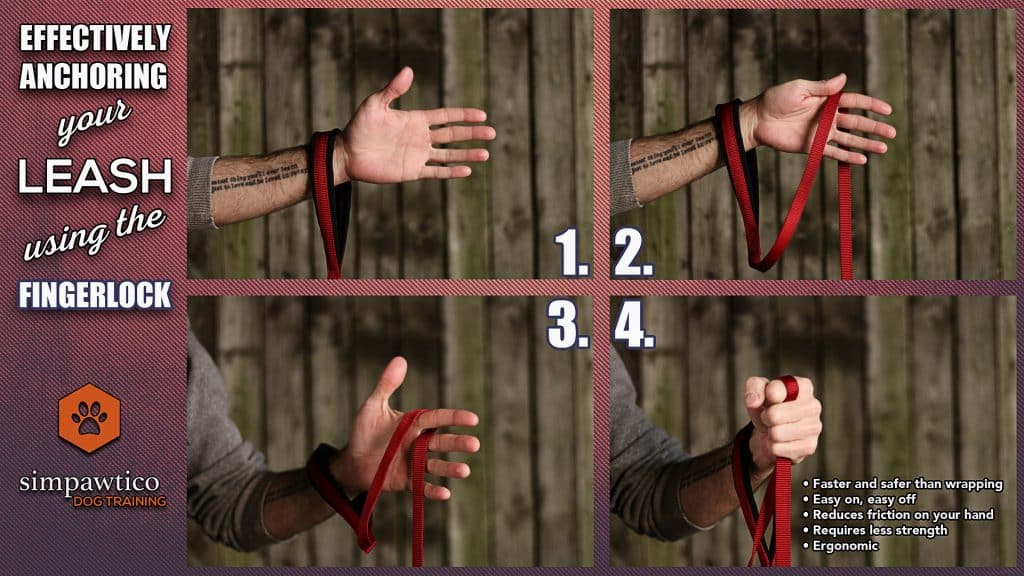
THE THUMBLOCK
The Thumb lock is an alternate method for people that might not like the Fingerlock.
It works essentially the same except the loop goes around the thumb.
We drape it across the palm like before, but we lock the thumb across the top of the fist so it makes a t-bar.
Make sure the whole thing is in the fist, not just one leg of it.
I personally prefer the finger lock, but I have had some students that liked the thumb lock better. And I’ve used leashes where the thumb lock worked better for me too, so it’s a matter of personal preference plus the equipment you’re using.
It’s also very important that the distal end of the leash, that is to say the end that goes to the dog, always exits the palm on the pinky side. Lots of people do this weird kind of underhand grip and that is problematic. Your wrist and arms aren’t designed to work well that way. You lock up your joints, and you lose dexterity and strength. Like I tell my students in class: “Pinky Side! Pinky Side!”
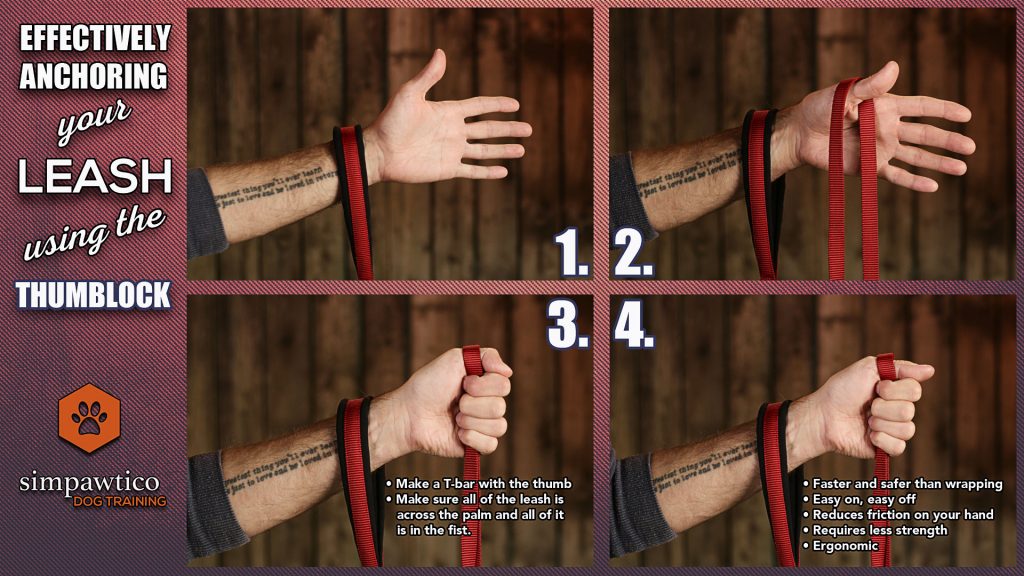
ANCHORS AWEIGH!
Ok, now, what do we do this new information? Well, you’re either going to use a Far anchor, or a Close anchor.
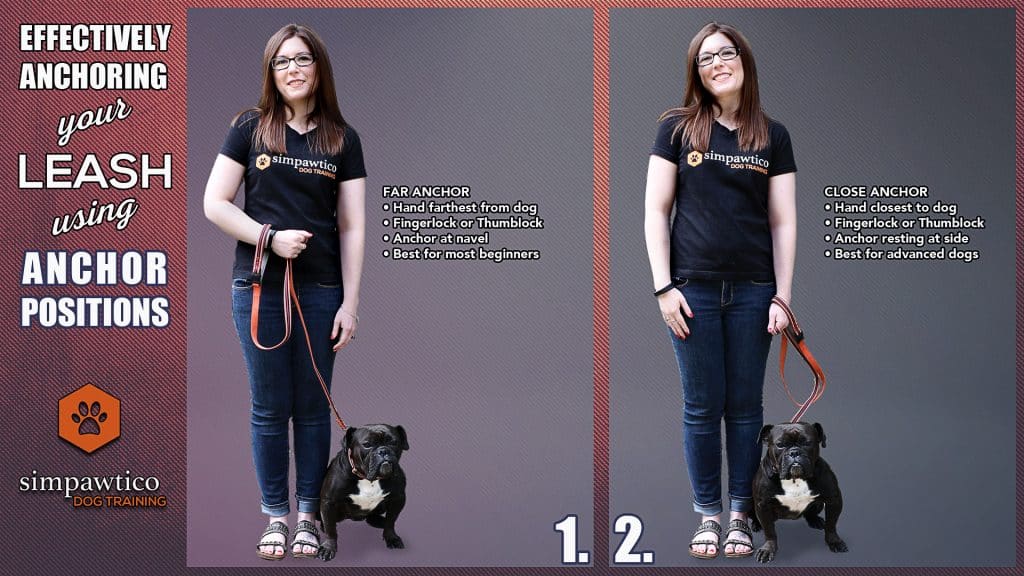
In the beginning stages, at least in the way that I teach loose leash walking, you’re going to use the Far Anchor first. This is in the hand farthest from your dog.
So, if your dog is on the left, you’ll use your right hand for the far anchor. You take the proximal end of the leash and do the ol’ Fingerlock or Thumblock, and put that at about your belly button. Your other hand will be your sensitive control hand and has that overhand grip on the leash. Pinky side! Pinky side! Don’t do that silly underhand stuff.
This way you’ll have the leash across your body, and your body will do more work than your arms.
You can also use your anchor hand to manage range more effectively than with your control hand. The control hand should be for fine, sensitive control. Large gross movements should be done with the anchor hand.
In the advanced stages, once your dog has a good grasp of loose leash walking, you can switch to a close anchor, which means you combine your anchor and control hand.
This is in the hand closest to your dog so again if your dog is on the left that will be your left hand. At this point in your practice you shouldn’t need more than small movements from your wrist to communicate with your dog.
Like I said this is usually a more advanced stage so most of you are going to be using the Far Anchor for now.
All right everyone. I hope this video post has helped reconfigure how you hold your leash for more strength, dexterity, and better communication. Let us know how it works for you in the comments below. As always, keep learning, keep practicing, and we’ll see you again soon!


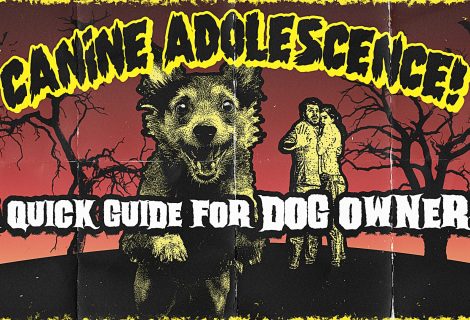
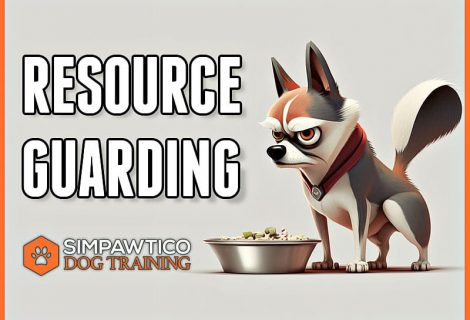


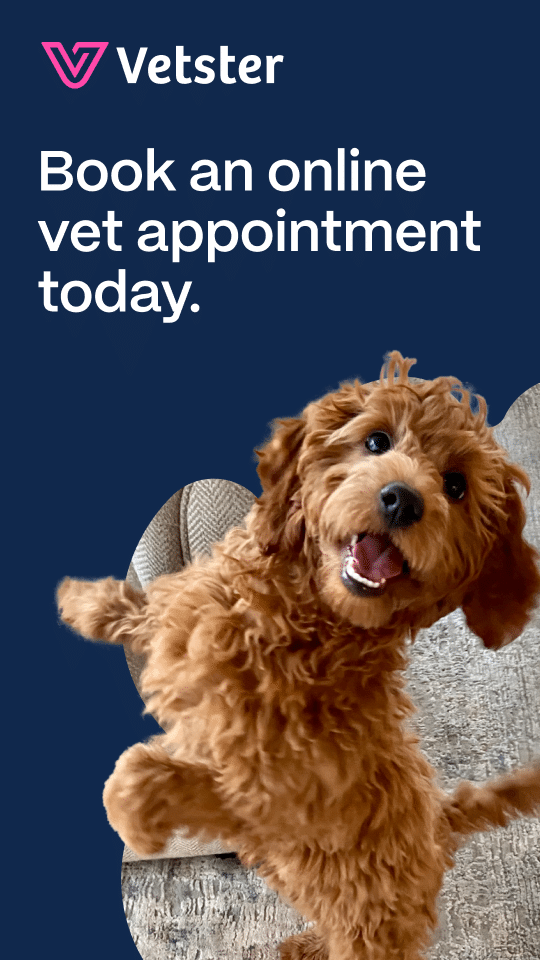

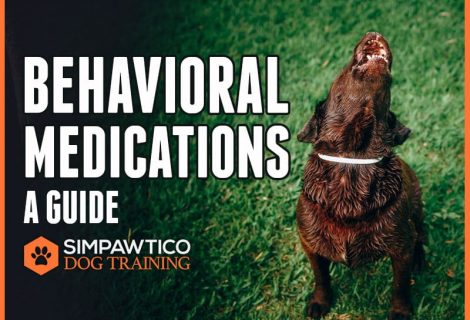
Trackbacks for this post